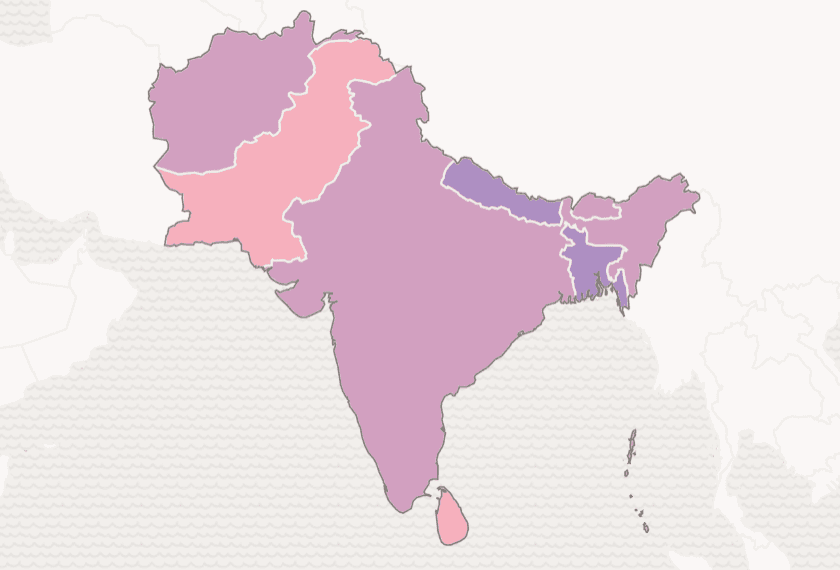Highlighted Stories

Introducing the Child Atlas: Understanding children's lives through the power of data
Data is essential to deliver children’s rights
With less than 7 years left, the world is way off-track to reach many of the Sustainable Development Goals for children set out in the 2030 Agenda for Sustainable Development. Progress for child rights is being threatened by multiple, overlapping crises with disproportionate impacts on children’s lives. Data to understand this situation is crucial: it helps us to make better decisions, allocate resources effectively and hold policymakers to account for their actions.
Explore children's different situations
The Child Atlas is Save the Children's new data platform to visualise, compare, analyse and understand children’s outcomes globally. The platform puts high-quality, publicly available data at your fingertips. For the first time, we bring together population-based data on key child development outcomes across multiple thematic areas in one integrated platform. This is complemented by data on risks and crises, public policies and financing decisions, and other contextual information.
- Explore the different ways inequality affects children’s lives: The Child Atlas includes disaggregated data where available, emphasising the inequalities in key child development indicators between different groups of children. This data is crucial to support the pledge to Leave No One Behind, allowing us to better understand the intersecting experiences of inequality, and to monitor rates of improvement. In both the Atlas and the country profiles you will find disaggregation by gender, place of residence, wealth, disability and sub-national regions. However, the availability of disaggregated data varies considerably by indicator and data source - you are most likely to find disaggregated data for child outcomes measured through household surveys (health, nutrition, education, child protection, poverty).

- Understand the relationship between different topics: Data helps us to draw attention to threats to progress, describe emergent risks and crises, and highlight policies and financing decisions that help to advance children’s rights. Importantly, the Child Atlas helps us to better understand how risks, crises and public policies overlap with children’s outcomes across health, education, protection, and broader well-being. For example, is under-five mortality more concentrated in countries with lower coverage of basic health services? (The answer seems to be yes, as our platform shows. Although we can only show correlations, not causality!) Being able to directly compare child outcomes with potential risks (climate, conflict, hunger, etc.) or policy choices (e.g. public investment in children) is essential if we want to take a more holistic and systemic perspective on children's rights. You can do this directly in the Child Atlas by selecting a secondary topic.

Blogs and AI to make sense of the numbers
Throughout the Child Atlas, we worked hard to present data in an easy-to-use format. A growing number of blogs will tell specific data stories, provide methodological backgrounds, or highlight innovative data projects we are working on. We also use AI-generated explainers throughout the Child Atlas to help make sense of the numbers, which are clearly marketed with a small 'AI' icon. While these help to explain the data in more detail and draw out some key insights, this is an experimental feature and sometimes they are getting things wrong (so please check any such statements).
Tell us what you think
We are very excited to finally share the Child Atlas with you! We hope that this platform will help you to describe and highlight the situation of children through data - informing strategic decisions, supporting policy or programme interventions and providing key evidence to hold decision-makers accountable. We see great potential for the Child Atlas and are already working on improvements. Please get in touch to tell us what you think, how this platform helps you in your work and what you would like to see included in the future. You can write to us directly at childatlas@savethechildren.org.uk.
Related stories:
Related stories

How a Soap Opera Helped to Reduce Child Marriage
Child protection (CP)
Child protection (CP)
2025-12-09

Does Insurance Benefit Child Health? Lessons from 38 Countries
Health (HL)
2025-11-19